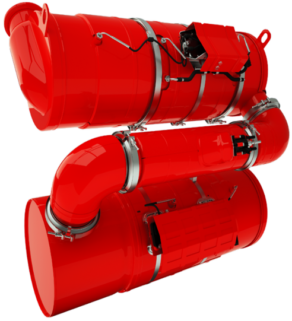Cummins and SCR. In house skills
We’re going to publish on Diesel International 4/2020 (available in August) a long overview about the SCR for European truck manufacturers (that’s still available on the Italian DIESEL May issue). It’s a way to understand what will happen in the engine room of the yachts. SCR will become a usual partner for leisure applications and […]

We’re going to publish on Diesel International 4/2020 (available in August) a long overview about the SCR for European truck manufacturers (that’s still available on the Italian DIESEL May issue). It’s a way to understand what will happen in the engine room of the yachts. SCR will become a usual partner for leisure applications and it won’t be a reply pleasure, for engineers, designers and owners.
We asked Cummins to summarize their approach as OEMs oriented engine manufacturers, involved in both automotive and marine applications.

Cummins and SCR. Starting from lay-out
Your solution provides a single module for SCR, DOC and DPF (the so-called ‘all-in-one’), two separate modules or do you have a flexible application? How does the electronic control unit work? Could you describe the sensors system in brief?
Cummins develops industry-leading aftertreatment technology designed to meet our customers’ needs for performance and reliability, while optimizing fuel economy and cost savings. Cummins Emission Solutions (CES) is a global leader in designing, manufacturing and integrating exhaust aftertreatment solutions to meet the highest emissions standards worldwide. CES offers a variety of proven aftertreatment solutions including: a Single ModuleTM application, that is an “all-in-one” solution, as well as more flexible options such as the Modular Aftertreatment system presently in use in Europe.
Cummins leverages the engine control module to eliminate the need for a dedicated aftertreatment controller. All our aftertreatments include one or more temperature sensors, pressure sensors, and NOx sensors; all of which play a vital role in ensuring optimal performance and regulatory compliance. In some markets, such as the United States and Canada a particulate matter sensor is also applied.
In the case of ‘all-in-one’, how is the module structured? Which rare earths make it up, how does the catalyzation process take place, what kind of regeneration takes place in the DPF?
The Single Module is an ultra-high efficiency aftertreatment system developed specifically to meet customer needs first, while also meeting emissions standards. The compact size enables better heat management and retention for improved fuel economy, driven largely by the simple and robust single pass exhaust flow design. All diesel aftertreatment systems in leading markets utilize platinum and palladium in their catalysts. Diesel Particulate Filter (DPF) Regeneration – Regeneration is the process of burning off any remaining combustible materials collected by the filter. This is achieved primarily via passive regeneration that occurs naturally during normal vehicle operation. Periodically, depending upon duty cycle, exhaust systems will execute an active regeneration by adding extra fuel from the system to ensure all combustible materials are completely removed.

Ammonia slip: how do you deal with the problem?
Cummins UL2.2 urea dosing systems combined with an ammonia slip catalyst helps to minimize any potential ammonia slip in our aftertreatment systems. Additionally, our Selective Catalyst Reduction (SCR) systems typically utilize a highly effective ammonia slip catalyst to ensure any excess is fully consumed.
In how many percentage points do you estimate the efficiency of your catalyst?
There isn’t a straight forward, simple answer that can be applied across the table. There are multiple chemical reactions a modern aftertreatment must perform, each of which is said to have an efficiency. Ultimately, the total degree of efficiency an aftertreatment system must achieve is determined by the difference between engine exhaust gas composition and regulatory limits.
Technical urea crystallization. How do you approach it?
All Cummins aftertreatment systems are designed to minimize the opportunity for urea crystal formation. The Cummins UL2 Urea Dosing System utilized in the latest systems is unique in that it does not require urea to be purged from the system at shutdown. This is made possible by a freeze-robust design capable of accommodating expansion during freezing. The Cummins UL2 is the only liquid-only dosing system in the market offering freeze-robustness in its design, and improved reliability, as urea is continually present within the unit to prevent doser crystallization and clogging.









